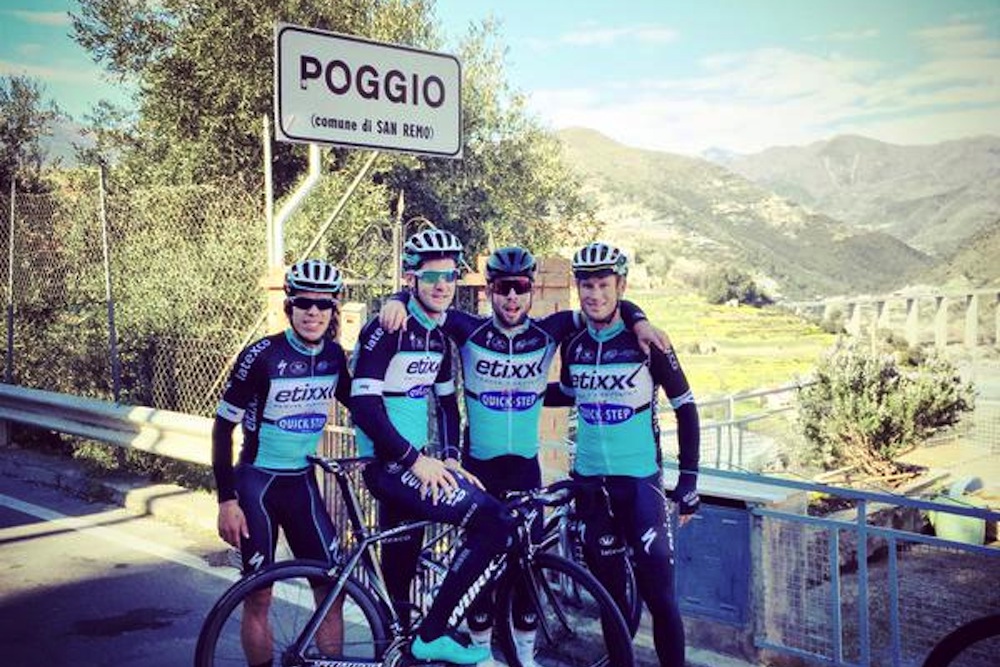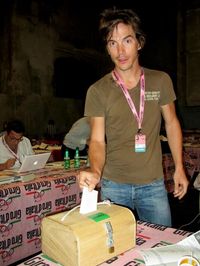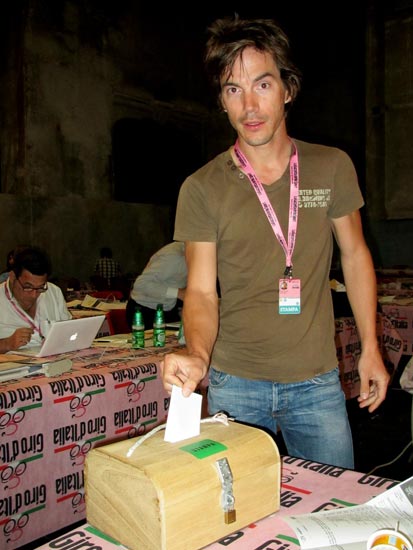Mark Cavendish recons Milan-San Remo course
Winner of the 2009 Milan-San Remo, Mark Cavendish, takes his Etixx-Quick-Step teammates on a reconnaissance of the race's new route


Mark Cavendish previewed the 2015 Milan-San Remo course with his Etixx - Quick-Step teammates on Wednesday, including the historical Via Roma finish line which has been reinstated for this year.
The revised route is something that could provide an extra motivation for Cavendish to win again, according to directeur sportif Davide Bramati.
"The Via Roma finish will give him new motivation, why shouldn't it?" Bramati told Cycling Weekly.
"Via Roma is part of San Remo's history, now that it's back, the race has even greater charm. That's the way it should be."
Bramati drove behind Cavendish and his team-mates Fabio Sabatini, Mark Renshaw and Rigoberto Urán in reconnaissance. The four covered the Tre Capi climbs, the Cipressa and the Poggio, and rode into San Remo's centre.
The organiser announced in January that the monument will finish on Via Roma instead of further south to the seaside as it has for the last seven years.
"It's the classic course, without Mànie and no Pompeiana, and the classic Via Roma finish line," said Bramati. "For sure, it's extra motivation for sprinters like Mark who have a chance."
The latest race content, interviews, features, reviews and expert buying guides, direct to your inbox!
>>> Ben Swift: Milan-San Remo is the one thing I’m thinking about
Fausto Coppi won on Via Roma when Milan-San Remo first finished there in 1949. Eddy Merckx holds the record, taking victory in the Classic seven times on the city's high street. Cavendish won in his first participation in 2009, when the race finished on Italo Calvino, but on March 22, he will have chance to race and win on Via Roma for the first time.
"There was a lot of traffic in San Remo yesterday, that's normal, but we did get a good look," Bramati said.
"Instead of making that left to the seaside, it's straight for 500 metres the new finish line. The Via Roma is wider than the other finish and a little shorter to the line form the descent of the Poggio.
"You know, though, it's still a street with a white line and at the end of 300 kilometres. You first have to get there with the front group to even have a chance!"
Two key elements in the race are the climbs inland from the Via Aurelia seaside road to the towns of Cipressa and Poggio. Both have ribbon-like descents, which are dangerous and technical when going at race speed. The latter descent leaves only 2.3 kilometres to race to the line.
"We've looked over some certain points, but it's not that complicated like the Tour of Flanders, where you have to mark many different points. There's less to study," continued Bramati.
"They need to be ahead at certain points: At the base of the Berta climb, entering Imperia where the road narrows and you have a left at the roundabout, for the start of the Cipressa.
"You don't want to spend too much energy to make up lost positions if someone creates a gap, and you don't want to descend the Cipressa behind, because at the base, there's always a huge acceleration on the main seaside road."
>>> Milan-San Remo has ‘rediscovered perfect recipe’ says former winner
Due to the open roads, Cavendish's group could not race full-speed down from the hillside towns to the Via Aurelia. They did note a few curves, the ones where Bramati said that if you go too fast then you could fly off road and into one of the many greenhouses that dot the hillside.
Cavendish races again this Sunday in Belgium's Kuurne-Brussels-Kuurne classic, then mid-March at the Tirreno-Adriatico stage race and finally, his first big appointment of 2015, Milan-San Remo
Gregor Brown is an experienced cycling journalist, based in Florence, Italy. He has covered races all over the world for over a decade - following the Giro, Tour de France, and every major race since 2006. His love of cycling began with freestyle and BMX, before the 1998 Tour de France led him to a deep appreciation of the road racing season.
